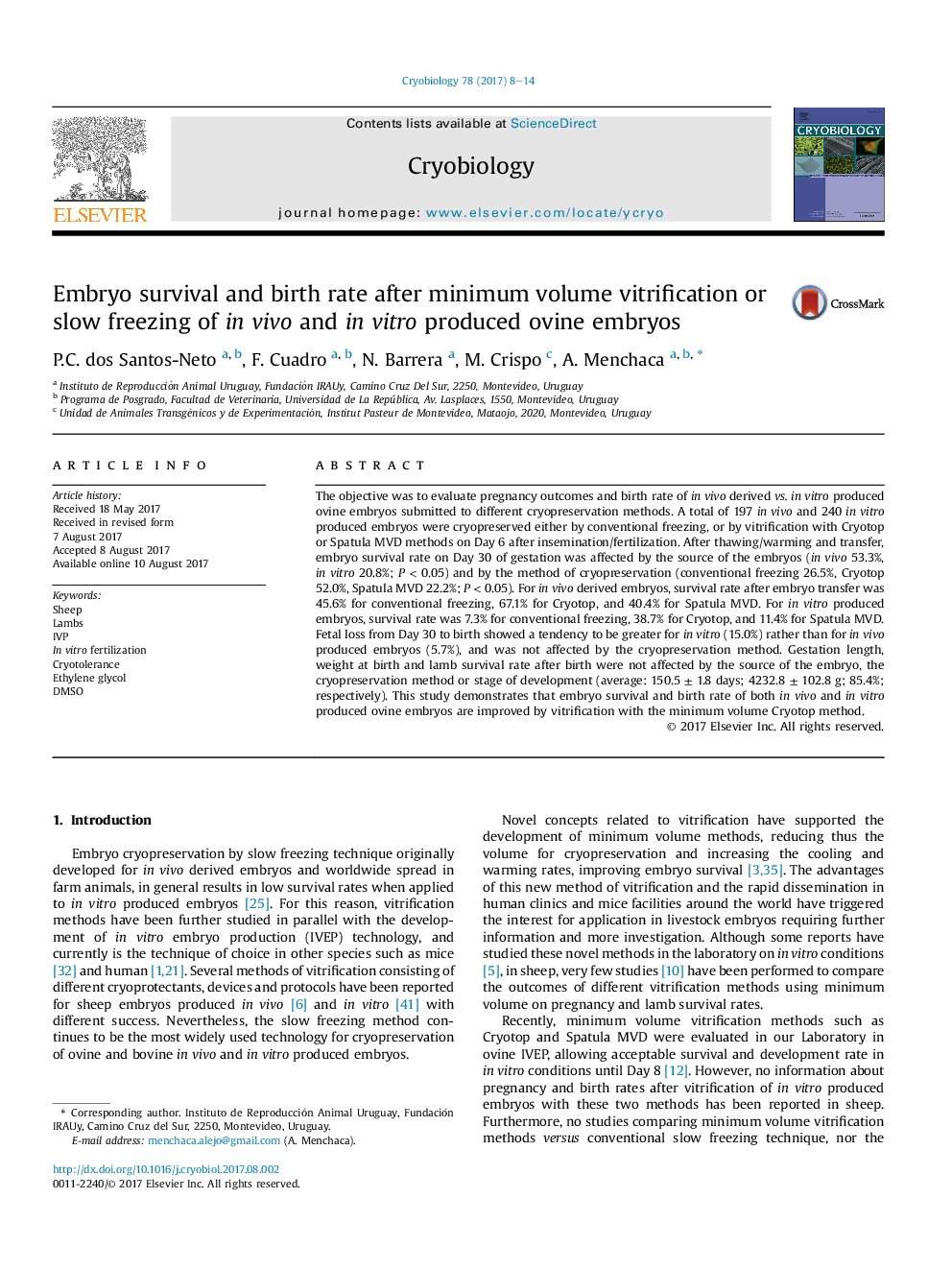| کد مقاله | کد نشریه | سال انتشار | مقاله انگلیسی | نسخه تمام متن |
|---|---|---|---|---|
| 5530865 | 1549441 | 2017 | 7 صفحه PDF | دانلود رایگان |
- We report pregnancy outcomes of sheep embryos cryopreserved by different methods.
- Pregnancy and birth rates were greater for in vivo than in vitro produced (IVP) embryos.
- For both embryo sources (in vivo and in vitro), Cryotop allowed greater results than slow freezing.
- Cryopreservation by minimum volume Cryotop method is recommended for sheep embryos.
The objective was to evaluate pregnancy outcomes and birth rate of in vivo derived vs. in vitro produced ovine embryos submitted to different cryopreservation methods. A total of 197 in vivo and 240 in vitro produced embryos were cryopreserved either by conventional freezing, or by vitrification with Cryotop or Spatula MVD methods on Day 6 after insemination/fertilization. After thawing/warming and transfer, embryo survival rate on Day 30 of gestation was affected by the source of the embryos (in vivo 53.3%, in vitro 20.8%; P < 0.05) and by the method of cryopreservation (conventional freezing 26.5%, Cryotop 52.0%, Spatula MVD 22.2%; P < 0.05). For in vivo derived embryos, survival rate after embryo transfer was 45.6% for conventional freezing, 67.1% for Cryotop, and 40.4% for Spatula MVD. For in vitro produced embryos, survival rate was 7.3% for conventional freezing, 38.7% for Cryotop, and 11.4% for Spatula MVD. Fetal loss from Day 30 to birth showed a tendency to be greater for in vitro (15.0%) rather than for in vivo produced embryos (5.7%), and was not affected by the cryopreservation method. Gestation length, weight at birth and lamb survival rate after birth were not affected by the source of the embryo, the cryopreservation method or stage of development (average: 150.5 ± 1.8 days; 4232.8 ± 102.8 g; 85.4%; respectively). This study demonstrates that embryo survival and birth rate of both in vivo and in vitro produced ovine embryos are improved by vitrification with the minimum volume Cryotop method.
Journal: Cryobiology - Volume 78, October 2017, Pages 8-14
